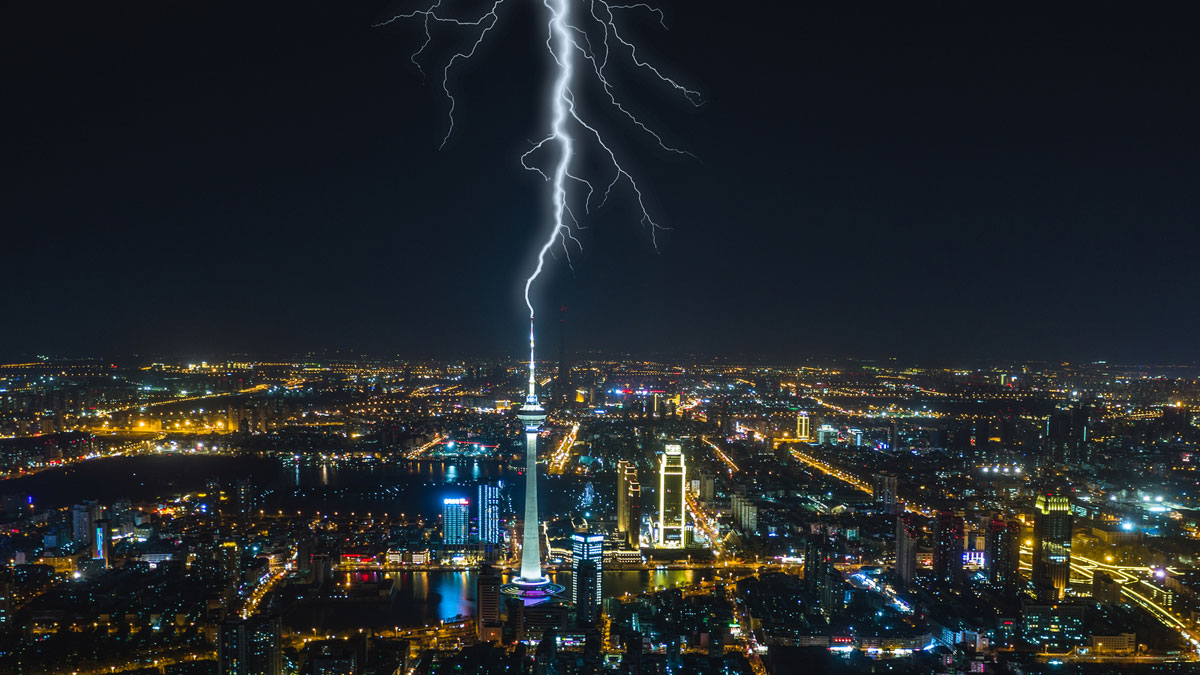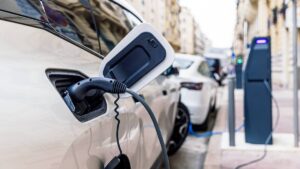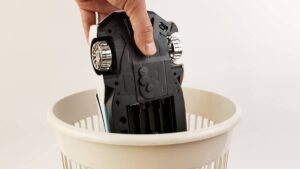China just jump started its already bright global EV ambitions

Picture: Getty Images
There’s little of the supernatural in China’s dominance of the expanding EV universe, despite a surge in its mythological branding of what might seem to many in the business as magical progress.
With the economy not quite where The Party wants it (but also not shuddering to a halt by nay means) it’s taken officials about five minutes to put together a stimulatory package which includes some further rounds of bang-on industry tax breaks designed to ignite the already sizzling sector.
As reported by this outstanding publication’s own Cameron Drummond this week, China’s Ministry of Finance is going to pump a stonkingly large – circa US$72.5bn package – of tax breaks and incentives to firestart sales of New Energy Vehicles.
China dominates the manufacturing of batteries for electric vehicles (EVs), every which way.
From mining production, controlling supply lines, direct access to the requisite minerals through to downstream manufacturing.
And on the battery front they’re way ahead when it comes to technical innovation.
This month alone, China’s introduced (by way of Greater Bay Technology Co.) the Phoenix (凤凰).
This is an EV battery which, like the re-flammable bird in Dumbledore’s office, promises to fully charge in just 7 and a half god damn minutes.
Even in winter. Or when a muggle has only 7.5 minutes to go drive 1,000 km without stopping.
GBT was only officially launched in 2020 by GAC Group (whose EV unit, GAC Aion, is already among China’s top new EV makers), but the Phoenix battery reportedly cxomews straight out of GAC’s Research and Development Center, which has been lazer-focused on attacking the battery question for almost 20 years now.
GBT says the Phoenix is likely to be getting mass-produced in a gigafactory somewhere by next year. The Phoenix is just the latest in a series of new Chinese batteries named after mythical beasts.
First, I will tax break you
But first things first, the latest round of EV tax breaks are set to be the biggest yet and there’s already been some action packed breaking on that tax front already.
In fact, over the last decade, while everyone except possibly Elon slept on it, the cumulative total of China’s EV tax breaks stands somewhere around 220 billion yuan (US$29.8 billion).
Cash concessions revealed by the Ministry of Finance this week are easily double that over less than half the time period – worth an estimated US$72.5 billion over the next 4 years.
China is not only the world’s most electric, EV market, accounting for 60% of global EV sales as of last year, but it’s also way out front in developing cutting-edge new batteries for electric vehicles (EVs).
The news comes just as China’s flagship Contemporary Amperex Technology Co.Ltd (CATL) revealed it’s just about set to start pumping out a whole new version of car battery which the company and party officials are hoping will shock the hell out of competitors like Elon Musk and show the EV world’s who’s the Industry’s real Daddy.
Boasting an energy density of up to 500 watt-hours per kilogram, CATL’s “semi-solid state battery” will apparently double the energy density of the best batteries out there right now.
An increase in energy density means that a battery can go further on a single charge, and it allows for the possibility of using smaller battery packs without a loss of range.
If this battery isn’t sheer bollocks, which – considering CATL’s track-record of delivering on its promises – is unlikely, then we’d be looking very soon at EVs on the road that can EVs with massive driving ranges, without needing a re-charge.
But wait there’s more, CATL says that the semi-solid state battery will be safe enough and have enough energy density to work in airplanes.
The company is currently working with partners on developing an electric passenger aeroplane – and since air travel accounts for around 2.4% of all global planet-warming emissions, (thanks to the BBC for that), then we’d be all winners if we’re not at war with each other by Xmas.
Back to these new extended EV tax breaks – that kind of official backing would just about guarantee EV demand in China remains front and centre while souped up new cars, production and cash-as-no-object-inspired innovation deliver more promises.
For now, China’s New Energy Vehicles (NEVs – bit of a Neville no mates acronym, but… whatevs) bought in the next two years won’t pay a skerrick of tax up to 30,000 yuan ($4,170) a pop.
The exemption will be halved and capped at 15,000 yuan later on, but the Ministry of Finance has signalled its intentions to back both sides of the EV universe.
The Ministry previously flagged a subsidy for NEV purchases for more than a decade in a successful kickstarter to the country’s electrical ambitions.
Top producer NIO and up and coming Xpeng both added 6.4%% and 5.8% respectively following the announcement on the Ministry’s website.
The new package extends the current NEV purchase tax exemption which expires at the end of 2023. NEVs include all-battery EVs, plug-in petrol-electric hybrids and hydrogen fuel-cell vehicles.
Other supernaturally inspired magic batteries on the way include the Dragon Armor (龙鳞甲) battery by Svolt.
This one, the company says, is “safer and lighter” than conventional batteries, and get ready – it is “chemistry-agnostic,” meaning that it can be romantically attached to any type of cell.
Then there’s this bad boy. Or girl. (CATL’s) Qílín (麒麟) battery, which has already fully entered mass production.
Deliveries of the Qilin-equipped Zeekr 001 WE sedan started in May.
CATL Chairman Robin Zeng (曾毓群 Zēng Yùqún) and Zeekr CEO (Ān Cōnghuì 安聪慧) attended were snapped inside the Zeekr 001 WE model at the start of June, which reportedly boasts a 1,032 km CLTC cruising range.
The 001 WE EV is equipped with CATL’s CTP 3.0 Qílín battery. And buyers can choose from two battery capacity configurations of the WE version:
1. 100 kWh battery capacity (741km, 6.9s) starts at 300,000 yuan ($US42,300 USD) and;
2. 140 kWh battery capacity starts at 403,000 yuan (US$56,900)
The battery uses cell-to-pack (CTP) technology, has the cells directly integrated into the battery pack instead of the modules.
The Qilin has a record-high volume utilisation rate (the percentage of battery energy utilised for driving) of over 72% and a vehicle range of at least 621 miles. With an energy density of 255 Wh/kg, the Qilin can do a hot start in five minutes, and charge up to 80% battery capacity in 28 minutes.
The Unicorn thingy and the Phoenix are the forerunners to what one can assume will be a conga line of Chinese batteries named after extraordinary Chinese legendary creatures.
While lots of them really are only mythical and aren’t yet in production there’s enough currency here to expect many will became a reality.
Like the Dragon Armor (龙鳞甲) battery by Svolt, a spin-off of China’s dubious Great Wall Motors, now with more MG and less asbestos.
The Dragon Armor battery packs reportedly boast “a volumetric efficiency of 76% which can lead to 800km of range in certain EV applications.”
Svolt Energy said back around Xmas that it’d release its new Dragon Armor battery product with a claimed range for EVs of up to 1,000km, with the biggest innovation apparently in the way battery is constructed rather than any significant changes to the battery chemistry.
At the same time the comapny says it plans to expand its footprint in Europe wioth as many as five factories located across eastern, northern and western Europe, with one larger site in the 20-gigawatt range, according to a Bloomberg report in April.
The company is targeting production capacity of at least 50 gigawatt-hours in Europe by the end of the decade, SVOLT Europe head Kai-Uwe Wollenhaupt said.
Packs with manganese cells can achieve a 900km range, while ternary cell-equipped packs can get up to 1,000 km of range.
CATL commenced mass production of the Qilin in March, just nine months after they announced the battery was being designed.
Related Topics
UNLOCK INSIGHTS
Discover the untold stories of emerging ASX stocks.
Daily news and expert analysis, it's free to subscribe.
By proceeding, you confirm you understand that we handle personal information in accordance with our Privacy Policy.








